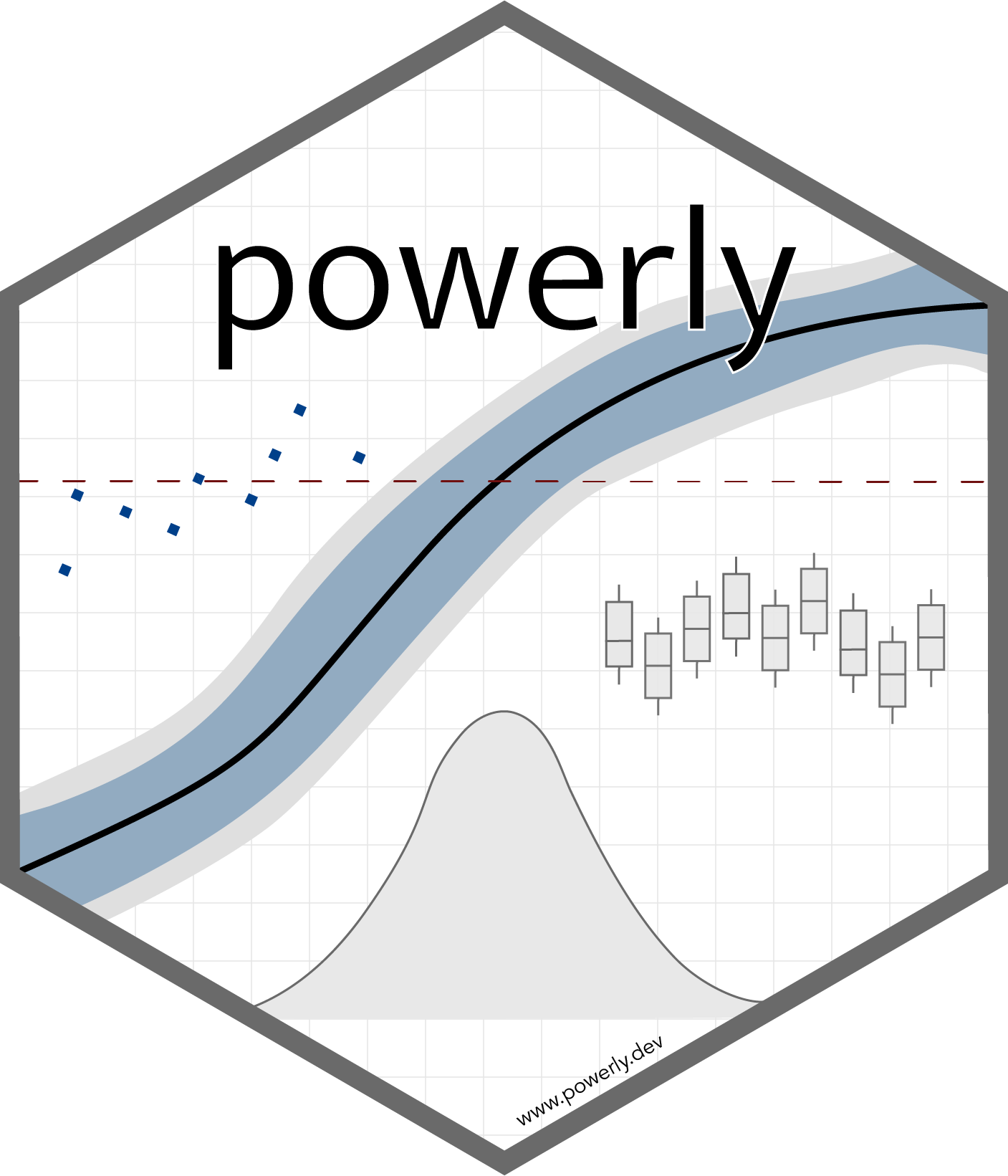Generate True Model Parameters
Description
Generate matrices of true model parameters for the supported true models. These matrices are intended to passed to the model_matrix argument of the powerly function.
Usage
generate_model(type, ...)
Arguments
| Name | Description |
|---|---|
type | Character string representing the type of true model. See the True Models section for possible values. |
... | Required arguments used for the generation of the true model. See the True Models section for the arguments required for each type of true model. |
Return
A matrix containing the model parameters.
True Models
Gaussian Graphical Model
Type: ggm
... arguments:
| Name | Description |
|---|---|
nodes | A single positive integer representing the number of nodes in the network (e.g., 10). |
density | A single numerical value indicating the density of the network (e.g., 0.4). |
positive | A single numerical value representing the proportion of positive edges in the network (e.g., 0.9 for positive edges). |
range | A length two numerical value indicating the uniform interval from where to sample values for the partial correlations coefficients (e.g., c(0.5, 1)). |
constant | A single numerical value representing the constant described by Yin and Li (2011). |
Note. For more information see the arguments of the genGGM function in the bootnet package.
Compatible performance measures:
sen(sensitivity)spe(specificity)mcc(Matthews correlation)rho(Pearson correlation)
See the Performance Measures section for the powerly function for more information on the compatible performance measures.
Examples
The example below shows how to generate a true network model based on a random architecture (Barabási & Albert, 1999) with nodes, positive edge weights, and an edge density of .
# Generate true model.
true_model <- generate_model(
type = "ggm",
nodes = 10,
density = 0.4,
positive = 0.9
)
# Load the `qgraph` package.
library(qgraph)
# Plot the model.
qgraph(true_model)
See Also
Functions powerly and validate.
References
Barabási, A.-L., & Albert, R. (1999). Emergence of Scaling in Random Networks. Science, 286(5439), 509–512. https://doi.org/10.1126/science.286.5439.509
Yin, J., & Li, H. (2011). A sparse conditional Gaussian graphical model for analysis of genetical genomics data. The Annals of Applied Statistics, 5(4), 2630–2650. https://doi.org/10.1214/11-AOAS494
